 Page 3
Page 3
Hike into the Central Crater Complex
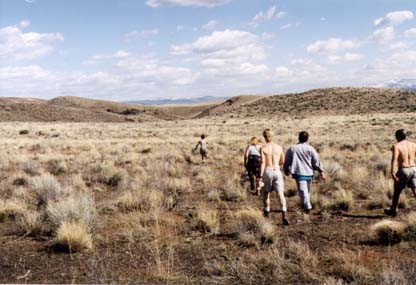
Wow!! This was a real trip into the imagination of geology. Daina led a fast and furious hike (run) for about a mile into the Central Crater.We started on the plateau west of the Craater. The surface was relatively flat and elevated to much of the complex. Rocks and sagebrush increased as we approached the edge of a gully that had a long broken pavement of pahoehoe along its bottom eighty feet below. The lava was a collapsed lava tube it appeared.
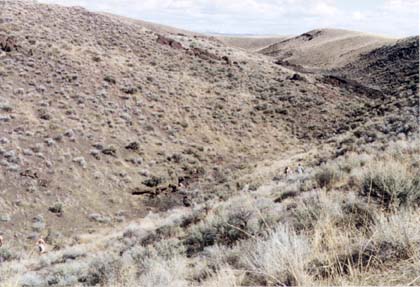 The gully joined with another over a small rise which opened into a broad valley or graben that stretched for a half mile of broken lava terraine. This was the most jumbled pile of lava slabs, tubes, aa, and pahoehoe I have ever seen. I guessed this lava field was more than five football fields in length.
The gully joined with another over a small rise which opened into a broad valley or graben that stretched for a half mile of broken lava terraine. This was the most jumbled pile of lava slabs, tubes, aa, and pahoehoe I have ever seen. I guessed this lava field was more than five football fields in length.
Our printed guide states that the caldera itself is a mile long and 3500 feet wide. steep banks rise on both sides, and although the guide says the caldera is 200 feet deep, I estimated, looking down from the top, that we climbed almost three hundred feet where we came out.
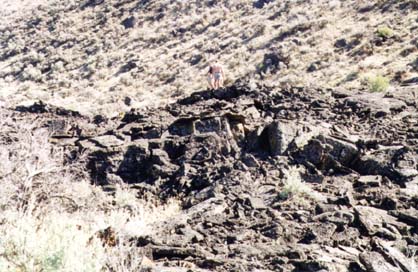 We scrambled over all of it, following after Diana, each of us at our own pace. I am still amazed that no one was injured, the odds were against it in this crater of sharp, hard, teetering slabs of basalt.
We scrambled over all of it, following after Diana, each of us at our own pace. I am still amazed that no one was injured, the odds were against it in this crater of sharp, hard, teetering slabs of basalt.
There are many openings through the broken lava into chambers that did not seem to have the shape of a lava tube. One chamber was twenty or more feet deep, and pinched shut at both sides making it somewhat boat shaped. Fellow classmates did climb into one where they claimed they found ice.
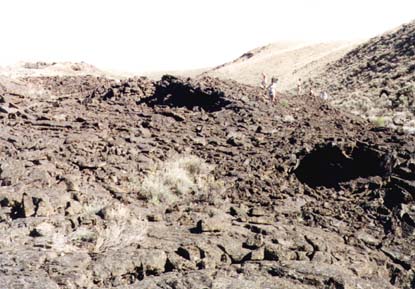
Everywhere one looked there were new shapes and textures. We followed Diana to a group of tall tachylite dribblet spires. These strange and exotic mounds of lava were actually verticle tubes of lava which were built of dribbles of lava. We climbed to the top and looked down the throats of these rock statues. The vents at their tops varied in size from five inches to one into which my classmate could put his head.
The guide text claims that there are 30 or more vents here, but we had only a quick view on a very fast run through the caldera. There were other features I was eager to explore that time did not allow.
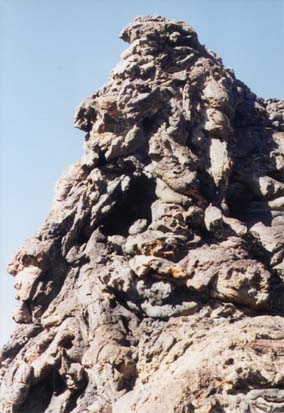
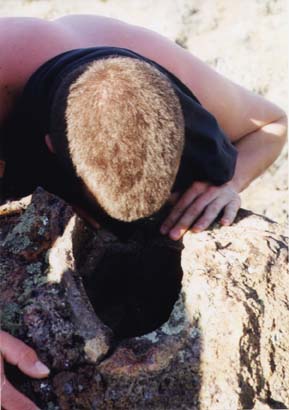
The dribblet spires are created by the last hours or days of escaping gasses which carry small amounts of lava to the surface and force them out the vent with just enough energy to allow the lava to drool down the sides like wax down a candle. Very cool Daina!
The banks of the caldera are grown over with sage and cheatgrass and other wild plants, and is composed of a granular pumice and shards of basalt and breccia. It was real exercise climbing the steep walls.
Looking back, this is a very exciting place to study volcanoes and lava. I would very much like to spend more time here at the Diamond Craters and especially the Central Crater Complex.
I must come back to see this place again!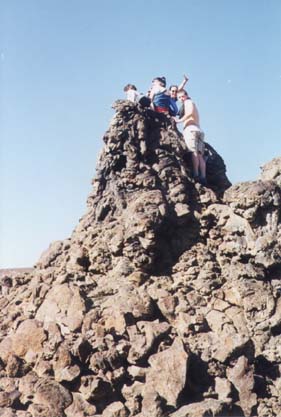 This is one HOT SPOT!
This is one HOT SPOT!
